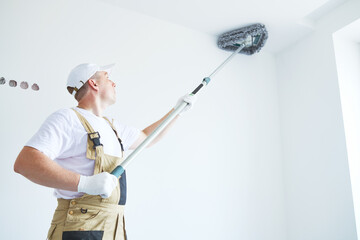Many homeowners have the background and fortitude to build their dock, but factors like the lake bottom configuration, shoreline layout, and local ordinances can make the project challenging. Working with a professional can save time and money while ensuring the project is done correctly.
Lake dock construction unveils a unique cost spectrum as regional labor and material costs become integral factors in the overall price. To keep your budget on track, prioritize functionality over elaborate aesthetics. Learn More here.
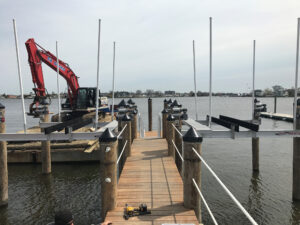
When building a dock on a lake, you must take into consideration sizing and layout. There are many different dock configurations that can be made, depending on your needs and local bylaws. Some docks are permanent, while others can be removed at the end of the season. Before beginning the construction process, homeowners should consult with the city or township to ensure they are aware of any regulations regarding docks. This can help avoid any issues down the road, and may even save time, money and stress in the long run.
One of the main concerns is that the dock must be able to adjust with changing water levels. Floating docks are usually tethered to the shore with concrete anchors on the lake floor, but they can rise and fall as the water level changes. This makes them a great option for lakes that have constantly changing water levels.
Another option is to build a piling dock, which uses wooden or steel piles that are driven into the lake bed for support. This type of dock is also stable, but it can be expensive and requires specialized equipment to install.
Lastly, there is the option of a stationary dock, which is constructed by using metal or wooden posts that rest on the lake bed sediment. These types of docks are often cheaper than floating docks, but they can be less stable if the lake bed is rocky or uneven.
Once you have determined the size and layout of your dock, it is important to consider other factors, such as access options for boats and jet skis. You should make sure to incorporate a ramp or lift into your design to allow easy accessibility for boating and recreational activities. Additionally, you should include utility options such as electrical outlets and freshwater lines for cleaning and maintenance.
Finally, you should consider the number of people you will be accommodating at any given time. If you will be hosting large groups of people, you should consider adding an extra platform or bench space for guests to sit and relax. This will help prevent any accidents or injuries from overcrowding and make your guests more comfortable.
Choosing durable and attractive materials can transform a simple dock into a long-lasting retreat from the elements. It can also add value to a lake side home, attract customers for commercial marinas, and enhance the beauty of public waterways. Whether your dock will be used for boating, fishing or swimming, the right decking material can prevent water damage from harsh weather conditions. It can also reduce the frequency of repairs, reducing maintenance costs.
Dock materials are available in a wide range of styles, from woods to composites and PVC. The best option depends on the type of use and environment, as well as the cost. For example, a plastic dock is more affordable than a steel one, but will not stand up to the heavy loads and rough water of a busy lake.
While decking materials can be chosen to match a dock’s aesthetic, pilings must be made of a hardy material that will resist decay, mold, mildew and pests. While there are several options, a good choice for residential or commercial docks is natural marine timber. This is a hardy wood that can be used in fresh or saltwater, and it resists corrosion. If natural timber is not feasible, a more durable and economical choice is pressure treated lumber. This wood can be treated with preservatives to help it last, even in wet environments like those found around It is important to install the piles a few inches above the highest possible water level for stability, which can be determined using historical records or by surveying the shoreline.
Piling sleeves are a common way to protect piles from the sun’s UV radiation and other environmental hazards. However, these sleeves are not as effective as a full-coverage treatment. Alternatively, you can use a vinyl-fiberglass composite marine piling. These are engineered and designed specifically for the marine contracting industry, so they can be expected to provide years of service and are highly durable in fresh or saltwater.
A PVC pipe filled with concrete can be used as a footer, providing additional stability to the dock. It is important to install these pipes on a bed of gravel, rather than directly into the lakebed. Otherwise, the ground will shift and cause problems for the dock’s foundation.
A lake dock offers homeowners a variety of benefits, from easing boat access to providing a comfortable place to sit and relax. It’s important to choose the right lake dock design for your property, though. The type you select depends on factors like local regulations, water levels, and environmental conditions.
For example, if the area you live in is known for having frequent floods, you may want to choose a suspended dock or one that can be lifted by cables during severe flooding conditions. If your area has a lot of rocky terrain, a piling dock might be best for you. Piling docks are built by driving wooden beams called “pilings” into the lake bed, and then decking is placed on top of these supports. They’re sturdy, durable, and can withstand violent waves. However, they’re expensive and require regular maintenance.
Another factor to consider is the fluctuating water level of your lake. Unlike ocean docks, lakes typically don’t experience changes in tides, but the water still moves and rises regularly. You’ll want to be sure your dock is constructed a few inches above the maximum water line. You can find this by checking the water runoff or looking at records or marks left on natural stone outcroppings around the body of water.
If you’re not quite ready to commit to a piling dock, you can choose a pipe dock. These structures have legs that stand on the lake bottom and are cheaper than piling docks. They’re also less permanent, but they can still be difficult to use if the lake rises or is flooded.
You can also opt for a hybrid lake dock, which is partially submerged in the water and rests on support poles or pilings. This provides stability and durability while allowing for a more gradual water movement than a floating dock, which makes it ideal for areas with fluctuating water levels. It’s also less invasive to local ecosystems, as the floating dock’s bottom isn’t attached to the lake bottom.
Finally, you can choose a floating dock made of high-density polyethylene. This material is ideal for lake docks, as it’s resistant to rot, splintering, and paint chips.
Building a lake dock is a big investment, one that comes with plenty of financial considerations. The type, materials, and electrical capabilities will all play a role in the overall cost of the project. But there are other factors that should also be factored in, like permitting and inspections. A detailed breakdown of these costs can help homeowners to plan responsibly.
The most obvious cost driver is the type of dock you choose. Residential wood docks tend to be cheaper, while steel and concrete seawalls are usually on the more expensive end of the spectrum. Then there’s the choice of a floating or fixed dock, which will also have a significant impact on cost.
Floating docks are a great option for those looking to avoid the high cost of piling-based docks and are suitable for use in most bodies of water. However, they don’t provide the same stability as fixed ones.
On the other hand, piling docks offer a steadfast presence in your vista, standing up to the gentle lapping of the water’s surface or even choppy waters with unwavering strength and durability. The added resiliency of a fixed dock offers more than just a physical foundation to your dreams, it also becomes a symbolic anchoring of your lakeside property and a reminder to always stay grounded and never lose sight of what matters most.
Lastly, the permits and inspections that are required to install a dock will add to the total cost. It’s important to find out what regulations are in place before starting any construction, including the city, county, state, and federal requirements that may apply. This process can take several weeks, so it’s essential to factor it into your timeline. Be sure to work with a trusted professional who is familiar with local rules and regulations, as they can guide you through the process and ensure that all necessary documents are submitted on time.
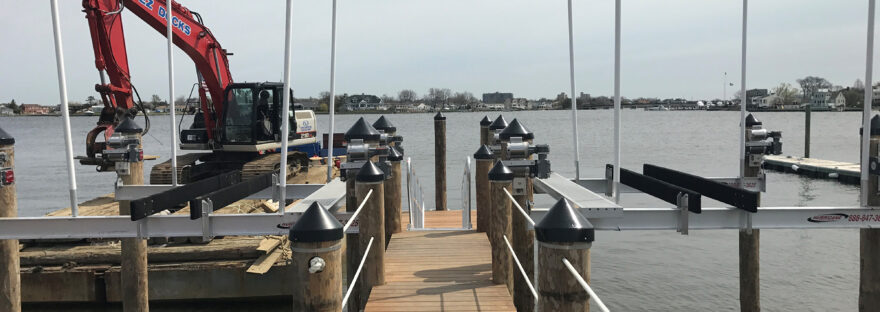

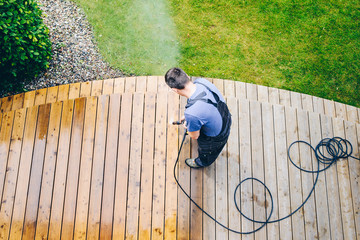
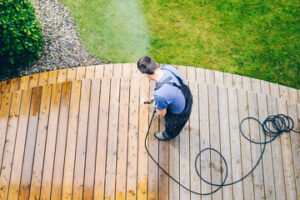 Use OxyClean
Use OxyClean

